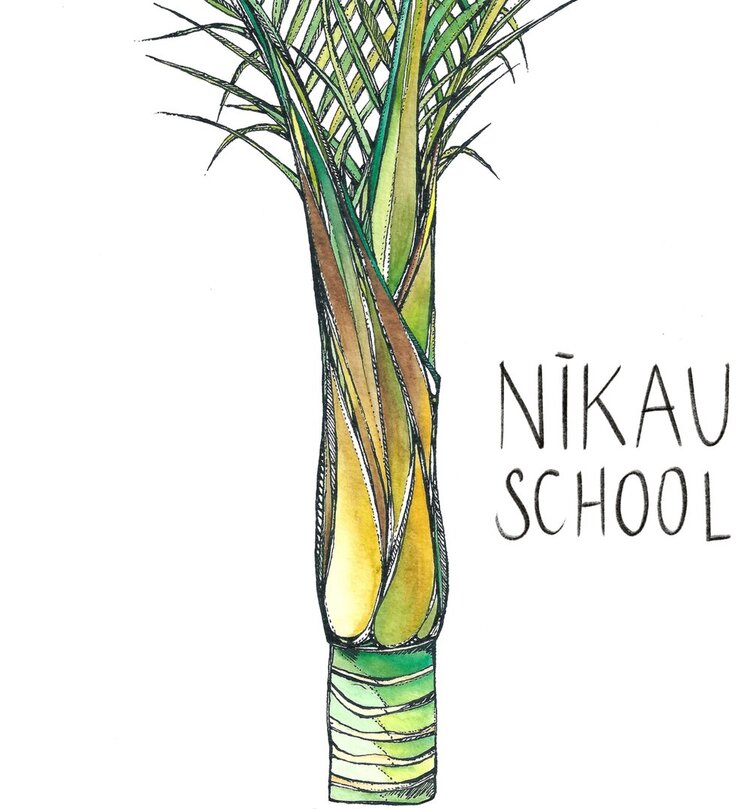Have Questions? We’re Here to Help!
At Nīkau School, we understand that you may have many questions about the Montessori philosophy, our curriculum, or general information about our school. That’s why we’ve created a detailed list of Frequently Asked Questions (FAQs) to guide you through the enrolment process.
While we’ve done our best to address a wide range of topics, if you have additional queries or need further assistance, our friendly team is always happy to help. Feel free to reach out to us via email at office@nikau.school.nz.
Q: Does Nīkau School have to teach the New Zealand Curriculum?
No, Nīkau School is registered as a private school, which allows us the flexibility to choose the curriculum we deliver. This gives us the freedom to implement the Montessori Primary Curriculum, tailoring learning experiences to each child’s unique strengths and interests.
Q: Are students left to do what they want each day?
The short answer is no.
Montessori education is centered around students taking responsibility for their own learning—within thoughtfully set boundaries. As students grow older and more independent, these boundaries expand. This means that while students can choose their activities at any given time or on a particular day, their choices come from a curated selection. The Class Director ensures that, over time, every area of the curriculum is engaged with and explored.
The Montessori approach allows them the freedom to work on a project for as long as they need, without interruption. They can take breaks when necessary, much like how adults manage their work—focusing deeply on tasks and taking a break when needed without seeking permission. This fosters independence, encourages a love of learning, and teaches students to manage their time and priorities from an early age.
Q: How is discipline handled in a Montessori classroom?
In Montessori education, discipline is understood as a skill that develops internally over time, rather than something imposed externally. The approach focuses on fostering self-discipline through freedom within boundaries. Children are encouraged to make choices and experience the natural consequences of their actions, helping them develop responsibility, respect, and self-control.
A fundamental part of Montessori education for all ages is the concept of ‘Grace and Courtesy.’ Students discuss this concept in an age-appropriate manner, starting from toddler groups and continuing through Middle School. Grace and Courtesy emphasise meeting the needs of everyone in the group while maintaining social harmony.
At Nīkau School, our core values of respect and responsibility underpin everything we do. Guidelines and rules establish a sense of membership, responsibility, safety, and respect for others. Our community operates under one key principle: respect—respect for oneself, others, and the environment is expected of all members of the school.
Q: Will my child meet the same academic standards as traditional schools?
Montessori education covers all key academic areas, from Mathematics, to Science, Music, Language, History and the Creative Arts - often going deeper into topics than traditional schools. The curriculum is aligned with developmental milestones and allows children to progress at their own pace.
Q: How are reading, writing, and maths taught in Montessori?
There is a lot to the language and mathematics curriculum, but in short, the Montessori philosophy teaches these foundational skills using a structured and sequential approach that is well-documented to support students, including those with a tendency toward dyslexia.
Language is introduced through phonetics, sensory activities, and hands-on tools that build a solid foundation for reading and writing. In mathematics, concepts are first taught using concrete materials like beads and number rods, gradually progressing to abstract understanding. This hands-on approach helps children grasp even complex concepts with ease and confidence.
Q: How does Montessori support children with different learning styles?
Montessori classrooms cater to various learning styles through individualised instruction, hands-on materials, and opportunities for exploration that appeal to visual, auditory, and kinaesthetic learners.
Q: What is the teacher’s role in a Montessori classroom?
The teacher, often called a guide or director, acts as a facilitator rather than a lecturer. They observe each child’s progress, introduce lessons at the right time, and provide support to ensure students are challenged and engaged.
Q: How are multi-age classrooms beneficial?
Mixed-age classrooms allow younger children to learn from older peers, while older children reinforce their learning by helping younger classmates. This dynamic fosters collaboration, leadership, and a sense of community.
Q: What does a typical day look like in a Montessori primary classroom?
A typical day includes uninterrupted work cycles (One in the morning and one in the afternoon ) where children engage in self-chosen activities, collaborative projects, and lessons guided by the teacher. The schedule also incorporates outdoor play, group discussions, and creative pursuits.
Q: How do children transition to traditional schools after Montessori?
Montessori graduates are often well-prepared for traditional secondary schools due to their independence, adaptability, and strong critical-thinking skills. They tend to excel in environments that require self-motivation and responsibility.
Q: What are the long-term benefits of a Montessori education?
Montessori students develop independence, confidence, creativity, and a lifelong love of learning. These skills equip them to excel in academics and life beyond school.
